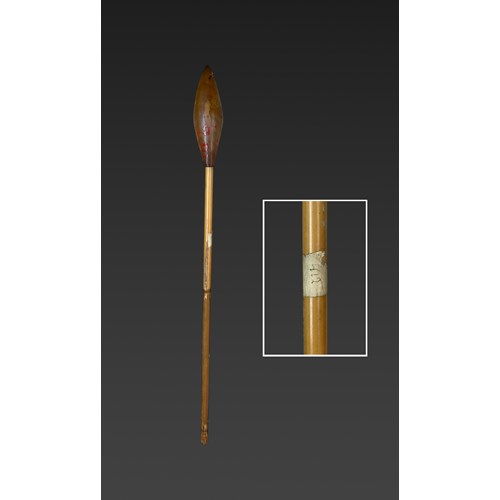Eskimo Wood Mask
Period 18th/19th century or earlier
Origin Northern Alaska
Medium Weathered Alaskan Yellow Cedar and marine ivory
Dimension 18.5 x 12.5 x 5.8 cm (7¹/₄ x 4⁷/₈ x 2¹/₄ inches)
Inupiak (Inupiaq) language group, Point Hope, Northern Alaska. Weathered Alaskan Yellow Cedar (Cupressus nootkatensis) and marine ivory with a thick granular paint-like substance and salt and sand deposits.
Period: 18th/19th century or earlier
Origin: Northern Alaska
Medium: Weathered Alaskan Yellow Cedar and marine ivory
Dimension: 18.5 x 12.5 x 5.8 cm (7¹/₄ x 4⁷/₈ x 2¹/₄ inches)
Provenance: Provenance : acquired by Edward J. (Doudou) & Thérèse Klejman in the early 1960's. Subsequently a private French collection.
Literature: Ref. :
Fitzhugh, W.W. & Crowell, A. : CROSSROADS OF CONTINENTS – Cultures of Siberia and Alaska. The Smithsonian Institution, Washington DC, 1988.
Fienup-Riordan, A. : THE LIVING TRADITION OF YUP'IK MASKS. University of Washington Press, 1996.
Private communications with the Sheldon Jackson Museum, 2015
Exhibition: Very early masks of this type are possibly death masks related to deceased shaman like the example found in a Siberian, Old Bering Sea culture, grave dating to around 2000 BP at Ekven which is now in the Museum of Anthropology and Ethnography, Saint Petersburg. On this example the eyeholes are stopped up with bone pieces. In other cases masks of this type were attached to the grave markers of important hunters and shaman like seen here below photographed at the mouth of the Kuskokwim River further South.
Of the 129 Point Hope masks in the collection of the Sheldon Jackson Museum in Alaska only 4 examples have ivory teeth. The extreme rarity of ivory teeth in the masks of the region is not explained – it may be due to the anteriority of masks with ivory teeth in relation to the ones with wooden teeth.
For due diligence a carbon 14 test (by Xylodata, France, N° Poz-74930) has been run on the wood which gives a mean date of A.D. 1650 ± 15 years. This pertains only to the material and not to the date or age of the artistic use of the wood. It is a well-known fact that the Eskimo populations principally used found wood; either from recent beaching of driftwood or pre-used wood recuperated from earlier sites. The stylistic analysis confirms the 18th/19th century dating, yet the c-14 result does open a small door towards a slightly earlier date possiblity situated in the second half of the 17th century.
More artworks from the Gallery









